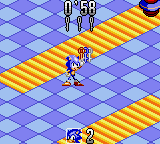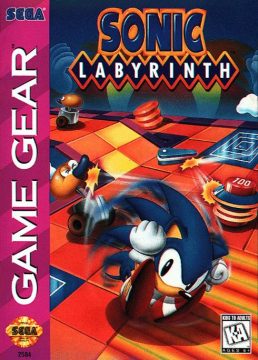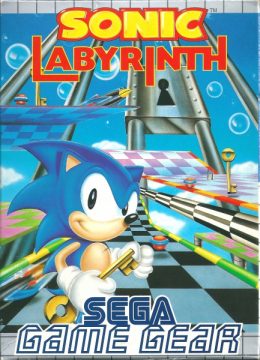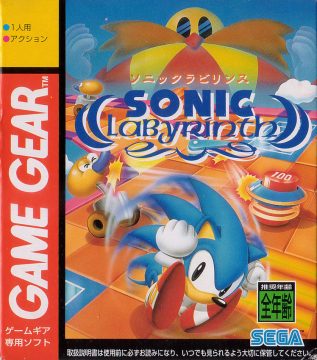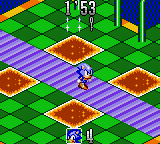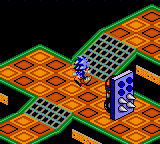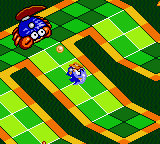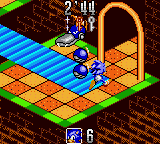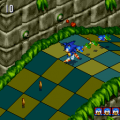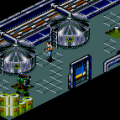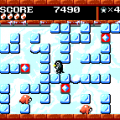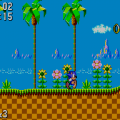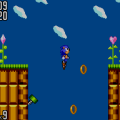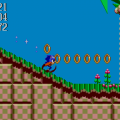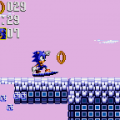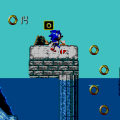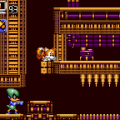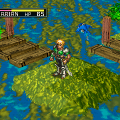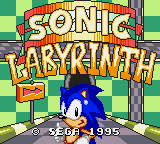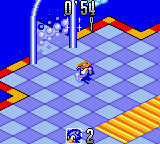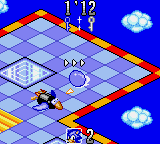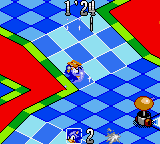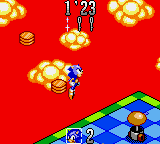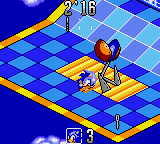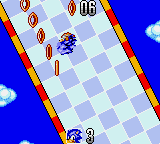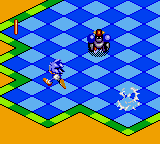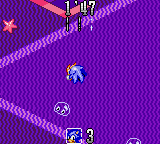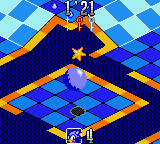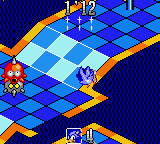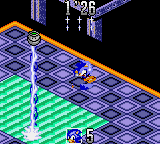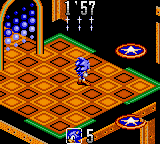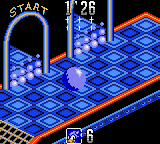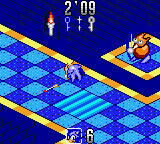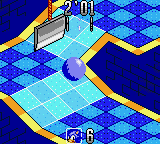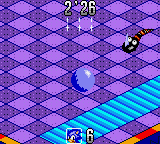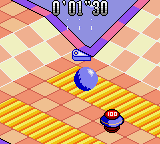- Sonic the Hedgehog
- Sonic the Hedgehog 2
- Sonic CD
- Sonic the Hedgehog 3
- Sonic & Knuckles
- Sonic the Hedgehog 4
- Sonic Mania
- SegaSonic The Hedgehog
- Sonic The Fighters
- Sonic 3D Blast
- Knuckles’ Chaotix
- SegaSonic Bros.
- Sonic the Hedgehog (8-bit)
- Sonic the Hedgehog 2 (8-bit)
- Sonic Chaos
- Sonic the Hedgehog Triple Trouble
- Tails’ Skypatrol
- Tails Adventures
- Sonic Labyrinth
- Sonic Drift
- Sonic Drift 2
- Sonic Blast
- Sonic R
- Murder of Sonic the Hedgehog, The
Of all the Sonic spin-offs made for the Game Gear, Sonic Labyrinth is definitely the strangest one. Developed by Minato Ginken, a short-lived studio that splintered from Arc Systems Works and made a handful of mostly Japan-exclusive games, this spin-off takes away Sonic’s trademark speed and puts him in an isometric action-puzzle game.
Contemporary reviews were fairly positive, but opinions have soured over the years to the point where it’s now considered one of the worst Sonic games. While it’s nowhere near that bad, it’s only a fairly competent game that’s just about worth checking out for the curious.
Dr. Robotnik has just suffered his latest defeat by Sonic, and is fuming at how he always uses speed to win, when he realizes that he could take away Sonic’s speed. So, he swaps out Sonic’s iconic shoes for much heavier ones, created with the power of the Chaos Emeralds, that bring his speed to a crawl and prevent him from jumping. However, Sonic still has the ability to spin dash, so he heads inside Robotnik’s labyrinthine fortress to defeat him, collect the Chaos Emeralds, and use them to get his speed back.
Sonic Labyrinth is an isometric action-puzzle game where your goal is to unlock the gate at the end of the level by collecting three keys. To get the keys, you’ll have to move around, but Sonic runs at a snail’s pace. The best way to get around is to charge up your spin dash, point in the direction you want to go, and burst off. While you’re rolling, you can press the spin dash button to stop yourself quickly.
This gives the game a start-stop momentum, where you swap from going at great speeds to braking to avoid bouncing off walls or crashing into enemies in quick succession. There aren’t any rings to collect, but that’s because the important thing to keep an eye on is time. You have a time limit that’s continually ticking town, but you can get more time by destroying enemies (which gives you a couple of seconds), and collecting the keys (which gives you about 30 seconds each).
When you get hit by an enemy without keys, you’ll lose about ten seconds worth of time. But if you’re holding keys, they’ll scatter nearby and you’ll have to collect them before they reset to their original position. This mechanic can get very annoying due to how difficult it is to retrieve the keys before they reset, and it’s a pain having to retread the levels after the keys reset because of how complex they can get.
The time limit gives Sonic Labyrinth an arcadey feel, with a focus on beating the level as fast as possible by cleverly using your spin dash. However, enemies continually respawn and the levels aren’t too big, so you should be able to beat the stages with plenty of time. You can also find power-ups, which appear as a tile of colored spikes that randomly change color. These can range from an extra life and more time to a temporary increase in speed and invincibility.
The game is split into four labyrinths, each of which are comprised of three regular levels and a boss level, where things change up a bit. Before you face the boss, you’ll roll down a long slide where you can collect rings, which give you an extra life when you collect 100 and can be used to protect yourself against the boss.
While they force you to understand the spin dash and bouncing off walls to effectively beat them, the boss battles are the worst part of the game. They’re often very easy to beat, but you can still get hit due to a mix of weird collision detection and an unclear perspective. Making this worse is that you have to repeat the ring slide if you die, which drags them out..
The controls can take a while to get used to, especially when holding the spin dash button determines how fast you go, and Sonic’s running speed is frustratingly slow when you only want to move a short distance. However, they work well enough, and if you’re still unsure, there’s an option in the menu to change the controls so that each button on the D-Pad corresponds to a diagonal direction instead of moving in whichever direction the D-Pad is pressed (similar to games like Monster Max or Head Over Heels).
They also complement the level designs, which are decently designed. They offer up a variety of challenging obstacles to keep you on their toes, there’s a few different paths and shortcuts that allow you to collect the keys in any order, and they’re just big enough to be a puzzle to navigate while not being too confusing.
The big issue with the game is that it’s just not very compelling. It’s functional, sure, but there’s not much else to praise in terms of gameplay or designs. There’s also not much to see in general, with the game being quite short. There are only 16 levels, and those can be cleared within an hour. While there is a time attack mode, it’s comprised of one stage (which is the second level but recolored), and the five-digit password offered at the end doesn’t do anything in-game.
There is a secret level hidden in the game, which you do need to access in order to get the sixth Chaos Emerald and get the best ending, so there’s at least some incentive to go back and play through the game. But despite the arcadey feel, there isn’t a high score board to compare scores – you’ll have to beat the game twice in a sitting if you want to compare scores, which is a shame.
For how long it lasts, Sonic Labyrinth is an okay game that offers something a bit different, and the presentation is on hand to back it up. The graphics are bright and colorful, with big sprites that stand out from the backgrounds, and a very smooth framerate that means the game plays well. However, it’s important to mention that when you collect power-ups in the original version, the background colors start to flash rapidly and harshly. This is a big problem for those who suffer from photo-sensitivity or epilepsy issues, and was thankfully removed in the version available on the 3DS Virtual Console.
The music, composed by Atsuko Iwanaga (who also handled the music to the GG port of Dynamite Headdy), isn’t as good. While the tunes are competently composed, there’s only about five songs used throughout the entire game, so they not only don’t fit the levels’ aesthetic, but can get repetitive pretty quickly.
The password you get when you beat the time attack mode doesn’t do anything in the game itself, but was actually used as part of a contest to promote the game’s Japanese release. The contest ran from November 17th to December 31st 1995, and the 100 players with the best times (indicated by the password) would be awarded prizes.
Links
An article about the game on Sonic Retro, where the Japanese contest was mentioned – http://info.sonicretro.org/Sonic_Labyrinth
